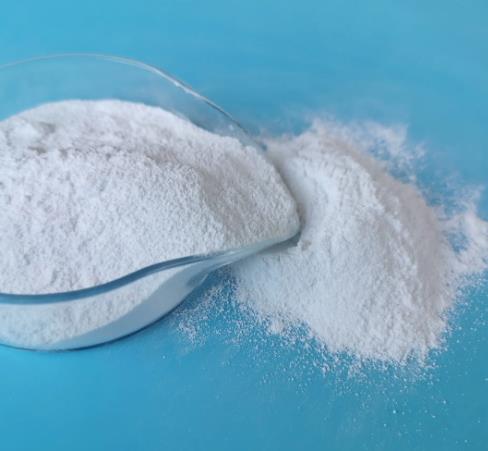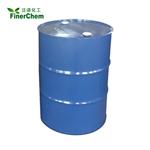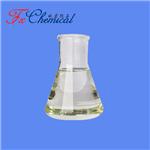Natural Methyl Anthranilate: A Comprehensive Overview
Jul 31,2024
Introduction
Natural Methyl anthranilate (MA) is an organic compound renowned for its distinctive grape-like odor. This chemical is naturally occurring and widely used in various industries, including flavorings, fragrances, and even pharmaceuticals. In this article, we delve into the various aspects of Natural Methyl anthranilate, exploring its properties, composition, applications, and storage methods, with a specific focus on its relevance and implications in the field of chemistry.

Figure 1 Characteristics of Natural Methyl anthranilate
Properties of Natural Methyl Anthranilate
Natural Methyl anthranilate, with the chemical formula C_8H_9NO_2, is an ester formed from anthranilic acid and methanol. It appears as a colorless to pale yellow liquid and is characterized by its strong, sweet, fruity aroma, reminiscent of grapes and orange blossoms. This compound is relatively stable under normal conditions but can decompose when exposed to high temperatures or strong acids.
Key properties include:
Molecular Weight: 151.16 g/mol
Boiling Point: 256-257 °C
Melting Point: -23 °C
Density: 1.168 g/cm³
Solubility: Slightly soluble in water, highly soluble in alcohol and oils
The unique aroma of MA is a result of its molecular structure, which allows it to bind effectively with olfactory receptors. This characteristic makes it an essential ingredient in the fragrance and flavor industries.
Composition of Natural Methyl Anthranilate
Natural Methyl anthranilate is primarily composed of the ester linkage between anthranilic acid and methanol. The synthesis of this compound in nature involves enzymatic processes in plants, particularly in grape and orange flowers. The natural extraction of MA typically involves steam distillation or solvent extraction from these plant sources.
In addition to its natural occurrence, MA can also be synthesized artificially through esterification reactions in a laboratory setting. This involves the reaction of anthranilic acid with methanol in the presence of an acid catalyst. The synthetic process, while effective, often aims to replicate the exact composition and purity of naturally sourced MA.
Uses of Natural Methyl Anthranilate
The versatility of Natural Methyl anthranilate is evident in its wide range of applications across various industries:
Flavoring Agent: One of the most common uses of MA is as a flavoring agent in food and beverages. Its strong grape-like aroma makes it a popular choice in confectionery, soft drinks, and alcoholic beverages. MA is also used to flavor tobacco products and pharmaceuticals, enhancing the palatability of otherwise unpleasant-tasting compounds.
Fragrance Industry: In perfumery, MA is valued for its sweet and fruity notes, often used as a middle note in fragrances. It is a key ingredient in many floral perfumes and is also used in the formulation of scented products like candles, soaps, and lotions.
Pesticides: MA has insect-repellent properties, making it useful in agricultural applications. It is often used as a component in eco-friendly pesticides, particularly for repelling birds and insects from crops without causing harm to the environment.
Pharmaceuticals: Beyond its sensory appeal, MA has potential medicinal properties. It has been studied for its anti-inflammatory and analgesic effects, and ongoing research is exploring its potential as a therapeutic agent.
Other Applications: MA is also used in the production of dyes and as a solvent in chemical syntheses. Its versatility and safety profile make it a valuable compound in various niche applications within the chemical industry.
Storage Methods for Natural Methyl Anthranilate
Proper storage of Natural Methyl anthranilate is crucial to maintain its stability and efficacy. The following guidelines are recommended for optimal storage:
Temperature: MA should be stored at a cool, stable temperature, ideally between 15-25 °C. It is essential to avoid exposure to high temperatures, as this can lead to decomposition and loss of aromatic properties.
Containers: Use tightly sealed, dark glass containers to protect MA from light and air. Exposure to light can cause photodegradation, while exposure to air can lead to oxidation.
Humidity: Store MA in a dry environment to prevent moisture ingress. Humidity can promote hydrolysis, leading to the breakdown of the ester linkage and the formation of anthranilic acid and methanol.
Handling: Handle MA with care, using appropriate protective equipment to avoid skin contact and inhalation. In a laboratory setting, ensure proper ventilation to mitigate the risk of inhalation of vapors.
![]() Reference
Reference
[1] aupp M, Harmsen D, Heckel F, et al. Production of natural methyl anthranilate by microbial N-demethylation of N-methyl methyl anthranilate by the topsoil-isolated bacterium Bacillus megaterium[J]. Journal of agricultural and food chemistry, 2005, 53(24): 9586-9589.
[2] Bräcker L B, Gong X, Schmid C, et al. A strawberry accession with elevated methyl anthranilate fruit concentration is naturally resistant to the pest fly Drosophila suzukii[J]. PLoS One, 2020, 15(6): e0234040.
- Related articles
- Related Qustion
- The grape scent compound Methyl anthranilate May 29, 2024
Methyl anthranilate is a benzoate ester that is the methyl ester of anthranilic acid. It has a role as a metabolite and a flavoring agent and is functionally related to an anthranilic acid.
- Methyl anthranilate: production and applications Jun 16, 2023
Methyl anthranilate, a natural metabolite with a characteristic grape-like odor, can now be directly produced via microbial fermentation, and shows many potential applications.
- What is Methyl anthranilate? Jan 2, 2020
Methyl anthranilate, also known as MA, methyl 2-aminobenzoate, or carbomethoxyaniline, is an ester of anthranilic acid manufactured through chemical synthesis.
Vanadyl acetylacetonate (VO(acac)?), also known as vanadium(IV) acetylacetonate, is a well-known coordination compound with the formula VO(C?H?O?)?.....
Jul 31,2024API2-Chloro-5-chloromethylpyridine facilitates eco-friendly insecticide production, aiding sustainable agriculture with reduced environmental impact through innovative synthesis methods.....
Jul 31,2024APIMethyl anthranilate
134-20-3You may like
Methyl anthranilate manufacturers
- Methyl anthranilate
-

- $2.00 / 200KG
- 2024-07-30
- CAS:134-20-3
- Min. Order: 1KG
- Purity: 99%
- Supply Ability: 1000mt/year
- Methyl anthranilate
-

- $10.00 / 1kg
- 2024-07-25
- CAS:134-20-3
- Min. Order: 1kg
- Purity: 99%
- Supply Ability: 1000 tons
- Methyl anthranilate
-

- $0.00 / 1KG
- 2024-07-25
- CAS:134-20-3
- Min. Order: 1KG
- Purity: 98%min
- Supply Ability: 30tons/month




